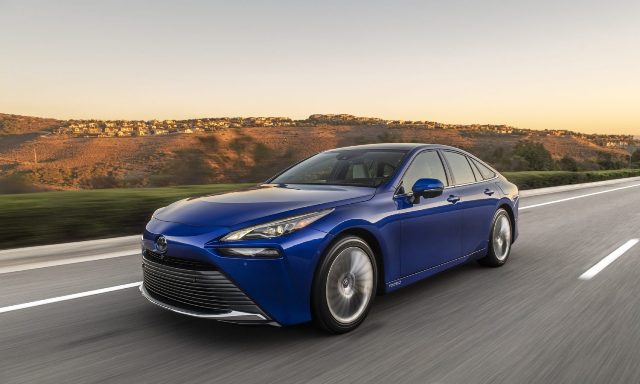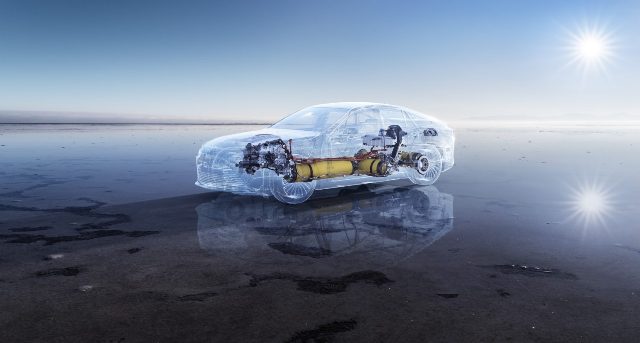
Toyota’s Audio Multimedia Upgrade in 2023 Mirai
2023 Toyota Mirai brings the future to drivers. Now in its second-generation, the Mirai brings a stunning design, dynamic driving performance and an EPA estimated zero emission range of 402 miles range on the Mirai XLE grade.
The 2023 Mirai Limited grade also brings the latest in advanced driver assistance technology with Toyota Teammate™, a suite of driver-assistance technologies that can be purchased as an upgrade designed to provide increased confidence for your drive. Toyota Teammate provides two functions: Advanced Drive and Advanced Park. It uses an intelligent system of cameras, radar and LiDAR, which work together in partnership to help achieve convenient and efficient mobility.
Advanced Drive can support drivers on certain limited-access highways by detecting driving conditions and executing acceleration, braking and steering commands under active supervision of the driver. Hands-free driving is also possible under certain conditions with eyes-on-the-road operation confirmed by the driver monitor system. Advanced Park assists the operations necessary for hands-free parking by automatically controlling steering, acceleration, braking and gear changes when parallel parking or backing into a parking space.

FCEV: Making Electricity from Hydrogen
In essence, the Mirai is a “plug-less” electric vehicle. There’s no need to charge a big battery, which can take several hours in a BEV even with fast charging. Instead, the FCEV driver simply fills the tank with hydrogen, just as millions of drivers do every day with gas vehicles. With an FCEV, the fuel is non-toxic, compressed hydrogen gas rather than liquid gasoline.
An FCEV generates its own electricity onboard from hydrogen, with water as the only emission. A fuel cell system combines stored hydrogen with oxygen from the air, and a chemical reaction that produces electric current, and water, which drops out of a hidden vent pipe beneath the car.
Electricity generated by the Mirai’s fuel cell and the regenerative braking system is stored in a lithium-ion battery. Pressing the accelerator pedal yields immediate flow of electric power from the fuel cell and/or battery to the rear-mounted AC synchronous electric motor, which drives the rear wheels. An electric air compressor pressurizes the intake air, and a water-cooled intercooler reduces the temperature of the compressed air before it enters the fuel cell stack. A water-cooled oil cooler integrated with the air compressor helps maximize efficiency.
The intake system is designed to mitigate noise, which is virtually unnoticeable to occupants. By necessity, the intake air for the fuel cell must be purified. And so, an electrostatic air cleaner element captures ultra-fine particles (Particulate Matter 2.5), and a charcoal filter removes chemical substances.
All new Toyota Mirai will include up to $15,000 of complimentary hydrogen with a purchase or lease.
Information Source: Read More “
Energy Monitors , Electric Power , Natural Gas , Oil , Climate , Renewable , Wind , Transition , LPG , Solar , Electric , Biomass , Sustainability , Oil Price , Electric Vehicles,


